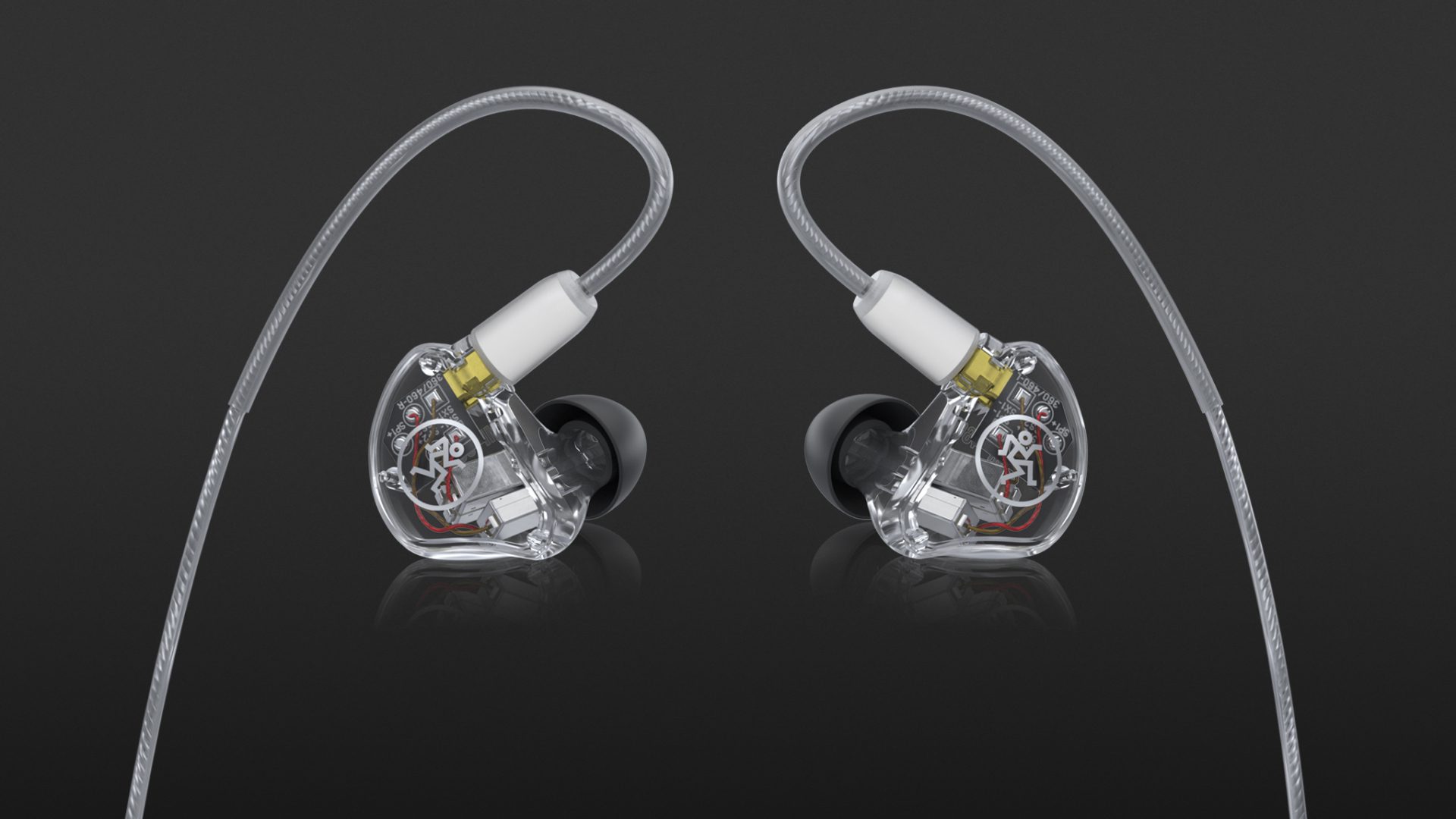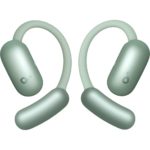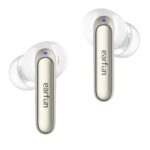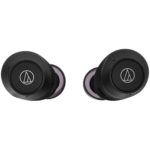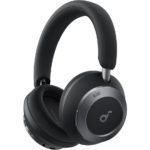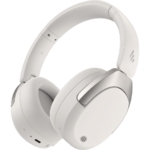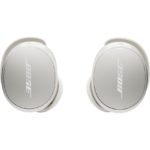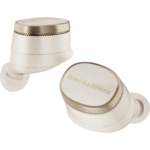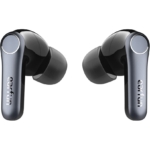If you want to hear what’s really going on in your favourite tracks, you should put the Mackie MP-360 in your ears! They are conceptually true IEMs, developed for the musician or sound engineer on and in front of the stage. There they need headphones that provide reliable sound assessments, and that’s exactly what the MP-360s deliver, but they strike a nice balance between this analytical accuracy and a sound image that allows relaxed listening to music. What is more, because the MP-360 sound good with almost any style of music, this makes them a real all-rounder. Only fans of really deep and fat bass should keep their distance. But if you want to listen to music the way the artist intended, you’ll be thrilled by the many fine details that you hear with the MP-360 even in songs that you already know inside out.
About two years ago Mackie released their MP series: All three pairs of headphones – the MP-120, the MP-220 and the MP-240 – were aimed at musicians and sound engineers who are looking for monitor headphones for the stage and the FoH/monitor mixing desk. Now Mackie has added three more pairs of headphones to the MP series: the MP-360, which I’m testing here, ranks in the middle of the hierarchy of the three MP newcomers.
Three ways
In contrast to the previous MP headphones (which had black housings), the transparent ear pod of the MP-360 allows you to see the driver technology: here, Mackie relies entirely on high-quality balanced-armature drivers from Knowles, which have one driver each for bass, mid-range and treble.
Good fit for good sound
For in-ear headphones, good sound always starts with a good fit: the bass can only develop fully if the earplugs seal the ear canal tightly. Mackie has always been aware of this and so the MP-360 comes with a selection of ear tips that surpasses even those of its predecessors: four different ear tips in three sizes each are included – so there are a total of twelve different versions to try! These include a set of Christmas tree-shaped ear tips and a set of Comply foam pads.
As with the previous MP headphones, changing tips is extremely tricky due to the large sound outlet. In the beginning, particularly if you want to test different ear tips, you might have cause to lose your composure. I got the impression that the MP-360 reacts very sensitively to the fit and type of ear tip, but you should nevertheless take your time and be patient as you try out the many different variations!
The accessories continue to be exemplary
The other accessories that Mackie packs into the box with the MP-360 are as generous as the ear tip selection: a sturdy plastic hard case for transport, a jack adapter, an additional black smartphone cable with remote control, a small microfibre cloth and a tool for cleaning the headphones and the sound channels.
Cables and handling
With IEMs the cable usually fits behind the ear and the MP-360 can only be worn in this way. This is important for musicians because the headphones fit very securely but can also be quickly removed from the ear without dangling anywhere in front of the body or your instrument. For the spectacle wearers among us, wearing the cable behind your ear is always a little annoying, but you get used to it. The rotatable MMCX plugs are also something like IEM standard and allow a quick cable change in case of a defect. The MP-360 is delivered with a silver cable plugged in, which I’ll just call the “stage cable”. The smartphone cable, on the other hand, is black and has a remote control, including a microphone for telephone calls. And is the balancing act – of changing the cable for your journey home – possible? It works, of course, but it caused me a few problems. Experience has shown that the MMCX plugs wear out when constantly plugged in and unplugged and then don’t hold so securely. In fact, according to specifications, the MMCX connector is only designed for about 500 mating cycles. So with the MP-360, you should not overdo it when changing cables.
Sound
When you have a new pair of in-ears in your ears for the first time and you notice after a few seconds that you don’t really notice them… then this is a good sign! That’s how I felt with the Mackie MP-360: there are no exaggerated bass frequencies rumbling, there’s nothing in the mids and there’s nothing hissing in the highs. The MP-360 simply sounds balanced, from the bass to the treble. They are also extremely precise in the reproduction of short, impulsive sounds. Some headphones are not fast enough and therefore sound a bit washed-out, not so the MP-360! My song for testing the bass is Pharrell Williams “Get Lucky” and rarely have I heard Nathan East’s bass playing as vividly as with the MP-360.
One of the strengths of Mackie’s MP-Series is their good stereo reproduction and the MP-360 is no exception: the soundstage is as wide as it is deep. I like to test this with Rubarth’s binaural recording “Sessions From The 17th Ward” and here you really have the feeling you’re in a concert hall and the musicians are sitting right in front of you (binaural = a recording technique, especially for playback on headphones).
The MP-360 have a tendency to sound analytical, but they are just getting the hang of it: although weaknesses in the sound are revealed – badly ripped MP3s, for example, sound really horrible – they are not as merciless as the MP-460. I can therefore recommend the MP-360 not only to a target market of musicians and sound engineers, but also to all music consumers who value a certain honesty in their headphones.
Optional Bluetooth adapter “MP-BTA”
If you want to enjoy this sound off stage, Mackie has developed the Bluetooth adapter MP-BTA (price approx. 97 Euros). It doesn’t make the MP-360 into true wireless headphones, but at least you don’t have to plug the cable into a smartphone. The adapter has two short leads – including a remote control and hands-free microphone for making telephone calls on the right cable – and a battery pack with clip. The MP-BTA connected easily to my smartphone and I could listen to music wirelessly for up to ten hours (the adapter is charged via micro-USB cable). A practical detail: when switching on, you are not given a percentage of the battery capacity, but a female voice announces the remaining battery life. The MP-BTA is up to date technically: it has the codecs SBC, AAC, aptX and aptX HD and supports Bluetooth version 5.0.
The MP-360 sounds a little bit different with the adapter than with the cable. I got the impression that the stereo image was a little bit tighter, the signals lost a little bit of precision and the nice highs that the MP-360 was capable of got a little bit lost – so I’d say that the MP-360 loses a little bit of focus on the small details when used with the adapter.
In practice, it bothered me more that the remote control was mounted quite high up on the cable. Since the adapter cables are also designed to be worn behind the ear, the remote dangles relatively high making it difficult to see.
By the way, there is nothing to be said against using the MP-BTA adapter with headphones from other manufacturers as long as they are also equipped with MMCX connectors.
Technical specifications
- Ear couplingIn-ear
- Typeclosed
- Transducer principle3 way balanced-armature drivers
- Frequency response (headphones)20 - 20.000 Hz
- Impedance17 ohms
- Sound pressure level (SPL)±3dB, 1mW@1kHz: 117 dB
What's in the box
- 4 types of eartips in 3 sizes each
- Cable with MMCX connection
- Cable with remote and microphone
- 6.35mm stereo jack
- Microfibre cloth
- Cleaning pen
- Hard shell case
Special features
- Bluetooth cable MP-BTA sold separately



